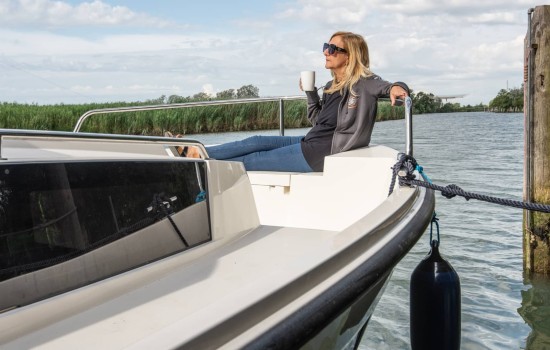How many hours per week are spent cruising? How many kilometres can be covered? How many towns and cities can be visited? These are interesting questions, which we will try to answer.
Every boat-holiday is different. There isn’t any pre-fixed way of sailing. Every crew has its peculiarities and is attracted by their specific interests. There is no precise rule. But, after having organised thousands of cruises, we are able to give you some suggestions. It’s preferable to navigate in the morning, rather than in the evening; you are more awake and well rested, the air is fresher and you will handle the driving with greater lucidity. What’s more, you will reach the chosen destination in time to be able to visit it before the evening falls, which is the moment when the shops close and there is the risk of being too late to stock up supplies.
You should also keep in mind that, the earlier you get to the berth, the higher will be the chance to find a free spot. Especially during high season, as well as in the more touristic areas, it’s recommendable to look for a berthing place in good time. Should there be no place available, you will still have enough time and daylight to move to the next location. The sunset twilight represents the most delicate moment for cruising, and should be avoided. This is the reason why cruising is not allowed after 18 o’clock (16 o’clock in April and October). Starting the navigation in the afternoon, leaving the moorings when the evening rolls around, always represents the unknown. The occurrence of any unexpected event will lead to delays and you risk to find yourself immersed in darkness, far from the port.
We suggest a maximum of 3-4 hours of navigation per day. Not to exceed with the driving hours will make you enjoy the cruising. And in case you drive more one day, you should compensate and drive less the day after. The classic itinerary can be typically covered in 25 h of sailing and will take one week to be completed. Every morning, the captain will gather his crew, share with them the schedule of the day and ask how long everybody wants to navigate and which preferences they have. You will find that the vacation is much more pleasant when the captain involves all the crew members in the choices. He will deal with a much more cooperative team.
It’s not mandatory to follow the schedule which has been set up at the beginning of the journey. In fact, the original line-up is almost never respected.
It sometimes happens that one enjoys a place so much, that they decide to stay there one more day. Or a day of bad weather conditions may force to a stop. No problem, the day must be faced with a positive attitude, keeping in mind that it’s a holiday with flexible rhythm and every day offers new opportunities. The weather conditions will influence your choices considerably. Remember to always check the weather forecast for the following day. In case of wind, navigating is forbidden. Therefore, if you see that you can’t cruise the day after, make sure you are moored in a nice location, with several things to visit, and well served by public transport. It’s always a smart practice to check the weather conditions of the next day, it will avoid you inconveniences and significantly improve the quality of you holiday.
Last, but not least, make sure you don’t drive too far away from your landing point, in order to be able to get back relaxed, without having to rush. Cruising fast in a slow river-boat is very unpleasant. You might fall from a state of peace and relax into a state of anxiousness, right at the end of the journey.
So, in a nutshell, it’s safe to say that the rhythm of a perfect houseboat holiday is given by:
- Not too many cruising hours, in the morning
- Interact and listen to the crew every morning
- Prepare a reasonable program for the day
- Check the weather forecast and the distance of your landing point
You will see that with these few and easy measures your holiday on a riverboat will be absolutely unforgettable
Booking online pays off, do it now!


















 Plan your vacation
Plan your vacation
 Navigation charts
Navigation charts